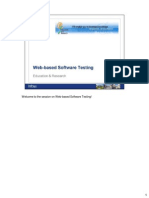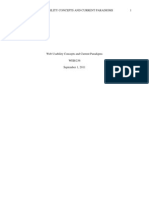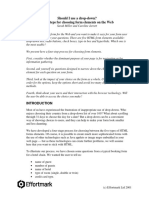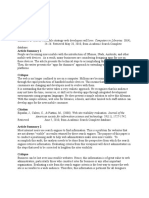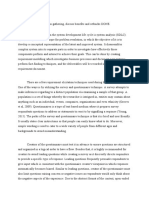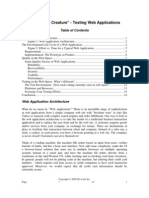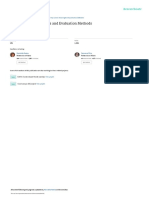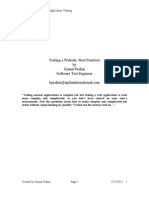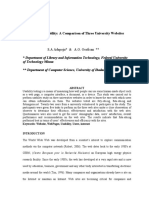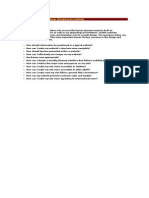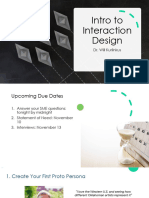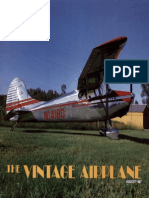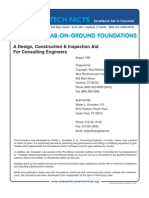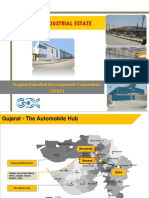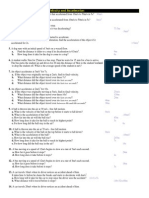0% found this document useful (0 votes)
74 views8 pagesMaking A Better Web Form: Caroline Jarrett Christopher Minott
The document summarizes testing done to evaluate changes that could improve conversion rates for an online mortgage application form. It describes:
1) An expert review of the form and competitors' forms, finding the baseline form was good overall but could improve its introduction.
2) Live testing of variants of the baseline form with changes like layout, colors, photos and reworking the introduction.
3) The only change to significantly improve conversion rates was reworking the introduction by redesigning the preamble and adding "About Us" and "Contact Us" pages.
Uploaded by
n33xCopyright
© Attribution Non-Commercial (BY-NC)
We take content rights seriously. If you suspect this is your content, claim it here.
Available Formats
Download as PDF, TXT or read online on Scribd
0% found this document useful (0 votes)
74 views8 pagesMaking A Better Web Form: Caroline Jarrett Christopher Minott
The document summarizes testing done to evaluate changes that could improve conversion rates for an online mortgage application form. It describes:
1) An expert review of the form and competitors' forms, finding the baseline form was good overall but could improve its introduction.
2) Live testing of variants of the baseline form with changes like layout, colors, photos and reworking the introduction.
3) The only change to significantly improve conversion rates was reworking the introduction by redesigning the preamble and adding "About Us" and "Contact Us" pages.
Uploaded by
n33xCopyright
© Attribution Non-Commercial (BY-NC)
We take content rights seriously. If you suspect this is your content, claim it here.
Available Formats
Download as PDF, TXT or read online on Scribd
/ 8





